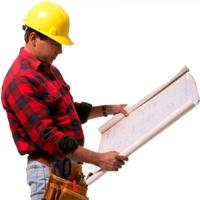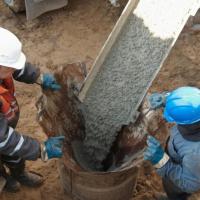What Is the Best Method for Foundation Repair? | A Homeowner’s Guide
by Demi on Aug 30, 2021
If you need foundation repair, it’s good to familiarize yourself with various repair methods available. You can then better understand why a foundation repair contractor might recommend one choice over another!
Noting some vital details about foundation repair methods can also ensure you protect those repairs and your home’s foundation over the years. Check out this quick guide for various methods of foundation repair, and be sure to call a repair company near you at the first sign of foundation damage.
Strong, Long-Lasting Steel Piers for Foundation Repair
Once a foundation has cracked and weakened, it typically needs support and bracing from underneath. Steel piers are an excellent choice for providing this added support; these piers or pins are placed into the ground either under a slab foundation or along the outside of basement walls. These pins are then attached to the foundation concrete with brackets.
Steel piers or pins are an excellent choice for foundation repair as steel is very durable, often lasting 150 years or more before needing repair or replacement. While steel piers might be the most expensive foundation repair method, they can also be the last foundation repair you’ll need over the lifetime of homeownership!
Concrete Piers, for Durable Foundation Repair
Concrete piers are more affordable than steel piers and these also provide support for a crumbling, weak foundation. Concrete segmented piers are small cylinders of concrete slabs premade offsite and then inserted into the ground under a home’s foundation.
Spot piers are concrete piers poured onsite. A repair contractor will drill into the ground and pour fresh concrete pins where needed. These are often used for lighter loads such as porches, patios, sunrooms, and the like.
Since concrete absorbs moisture from the soil around it, these piers are not typically recommended in tropical areas or those prone to flooding. It’s also vital that a homeowner keep their property graded and irrigated as needed, to prevent moisture collection around concrete piers. If a contractor uses high-quality concrete mixtures and installs them properly, and a homeowner protects those piers from moisture, concrete piers can provide durable foundation repair that lasts for decades.
Polyurethane Foam, for Emergency Foundation Repair
Dense polyurethane foam is often used for emergency foundation repair; this foam expands upon application, which helps to lift sunken areas of a foundation as well as concrete slabs including roads, driveways, walkways, and patios. The foam seeps into cracks and crevices of the foundation and then dries and hardens, blocking out moisture and filling in damaged areas.
There are many varieties of polyurethane foam used for foundation repair but these will break down and degrade over time, which is why they’re not typically considered a permanent solution. These foams can also be used along with other foundation repair methods; for example, after house leveling, foam might be injected into various damaged areas to help seal off cracks and chips.
Slab Jacking or House Leveling for Foundation Repair
Once a home’s foundation cracks and weakens, the weight of the home can cause it to sink, usually along one side or section. Once this occurs, you might need to schedule house leveling, also called slab jacking or mud jacking.
House leveling is not as drastic as you might assume! Typically a foundation repair contractor will drill holes through the foundation and then insert a specialty grout or slurry into the holes and underneath the foundation. This slurry expands as it dries and hardens, lifting the structure until it’s level and even once again.
Slab jacking is also sometimes used along with other foundation repair methods. For example, the home might still need underpinning or pier insertion along the foundation edges or underneath the slab, for added support. Polyurethane foam can also be used to close up cracks and gaps, as said.
Protecting Your Foundation Repairs
No matter your chosen method of foundation repair, it’s vital that you protect those repairs over time. Note some added suggestions for keeping a home’s foundation strong and stable.
- Always ensure proper drainage on your property, to keep water from pooling around a structure’s foundation. Some properties might also need retaining walls, French drain installation, and other drainage solutions.
- Invest in regular sealing and crack filling for your home’s foundation, to help prevent new cracks from forming and to keep minor cracks from spreading and deepening.
- You might not associate clogged gutters with foundation damage but gutters and downspouts are designed to direct rainwater and melting snow and ice away from the home. When gutters and downspouts are clogged, damaged, or undersized, this can allow rain to collect around the home’s foundation, risking damage.
Remember to ask your contractor for more advice on how to protect your foundation repair. This will ensure your home’s foundation is always in good condition over the years.
Popular Articles
Three Places to Spend Money on the Exterior of Your Home
When you have the exterior of your home remodeled, you are investing, time, energy and convenience into the project and you want to make sure that...
101098 Views
Homemade Headboards-Make an Upholstered or Wooden Headboard
Homemade headboards can add a lot of personality to any bedroom. They can be coordinated with existing furniture and room decor or they can be the...
76666 Views
When to Use a Brush, Roller or Sponge Brush
Brushes are a good choice for painting trim and woodwork. They are also useful for cutting in the edges around the top and bottom edges and corners...
72581 Views
Creating a Cottage Kitchen with Bead Board
Kitchen decor can range from modern and bold to elegant and elaborate by using strategic kitchen pieces. One of the most popular decorating trends...
55096 Views
Gas Fireplace Diagnostics and Troubleshooting
Follow these steps for diagnosing and troubleshooting Gas Fireplaces repairs. For the average DIYer, this may seem intimidating, depending on the...
32201 Views
Latest Articles
How Much Does it Cost to Take a Bath?
Plumbers know that a bath may seem like a relaxing luxury, but the real cost extends far beyond your water bill. The average soak uses 35 to 50...
on Apr 8, 2025
10 Concrete Patio Ideas on a Budget
A concrete patio can be a game-changer for your outdoor space. It is durable, versatile, and can be customized to fit your style. But what if you...
on Mar 25, 2025
Tips for Creating a Stunning Personalized Photo on Canvas
Order the unique beauty of a personalized photo on canvas and bring your memories to life. With a customized photo on canvas, you can transform...
on Mar 7, 2025
Best Areas to Buy Property in Singapore for Long-Term Growth
Singapore's real estate market remains one of the most stable and lucrative in the world. With limited land supply, strong governmental...
on Feb 18, 2025
Troubleshooting Excess Water in Your HVAC Secondary Condensate Drain Pan
When maintaining your air conditioning system, it is easy to overlook the condensate drain pan - until excess water starts pooling in places where...
on Jan 12, 2025
Featured Articles
What Type of Licensed Contractor Should You Hire?
on Feb 28, 2017
Hire Contractors / Estimates

Looking for a specialty project? There are many types of contractors available for your home improvement needs. Finding the right type of...
Sponsored Articles
Best Areas to Buy Property in Singapore for Long-Term Growth
on Feb 18, 2025
Real Estate / Finance

Singapore's real estate market remains one of the most stable and lucrative in the world. With limited land supply, strong governmental...
Actions
Top Categories
- Garden / Landscaping / Patio — 264
- Kitchen / Bathrooms — 240
- Real Estate / Finance — 203
- Appliance / Repair — 186
- Interior Design / Decor — 184
- HVAC / Air Conditioning — 148
- Cleaning / Maintenance — 144
- Improvements / Remodeling — 131
- Plumbing / Basements — 118
- Floors / Tile / Hardwood — 116
- Doors / Garages — 113
- Safety / Security — 113
Articles Archive
More DIY Articles
The Difference Between a Conventional or Convection Electric Range
A good electric range will have several standard features that most people will use. Some of these features include broil, bake, and warming...
Holiday Home Safety Tips That Are Often Overlooked
While preparing for the holidays, it is easy to forget about basic safety measures. Nevertheless, home decoration and celebration with the family...
What You Should Know about Multi-phase, Industrial Power Sockets and Plugs
Safety, efficiency, and practicality are always key concerns when it comes to electrical systems. This is particularly true for industrial...
Clean Your Windows the Right Way: Cleaning Tips from a Window Replacement Company
Even windows that are deemed maintenance-free need some attention from time to time. If you have a window or two that's looking dull and drab, you...
4 Key Benefits of Air Conditioning Preventative Maintenance
Your annual AC cleaning and inspection is about making sure there aren’t any problems brewing. If there are, better to fix them before they have a...

